Favorite Pregnancy Books & More…
A note to our expectant moms: No book can diagnose or decide what is best for you and your baby. If you have any questions or concerns about your pregnancy, contact your doctor or health care provider. Our recommended books are simply supplemental reading for moms who want to further enrich their understanding of pregnancy.
If you would like to purchase a few of the books reviewed AND support PAK at the same time visit AmazonSmile. Just click here now and choose Project Alive & Kicking as your favorite charitable cause!
Pregnancy
Mayo Clinic Guide to a Healthy Pregnancy
Book by The Mayo Clinic Staff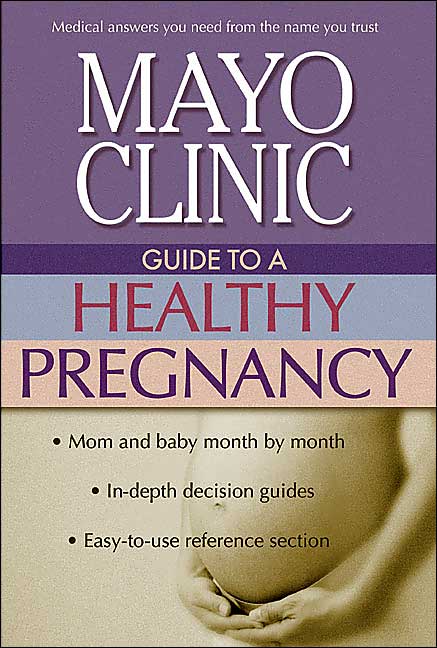
This guide from the famed world-class Mayo Clinic will answer just about any pregnancy question you may have. Its over five-hundred pages will take you though every week of your pregnancy, updates on your baby’s growth, and your month-to-month changes. We would consider this guide our pregnancy bible with its thorough, informative pages and long list of contributing medical editors and team of pregnancy experts. Pregnant moms should have a copy by their bedside table.
What to Expect When You’re Expecting
Book by Heidi Murkoff and Sharon Mazel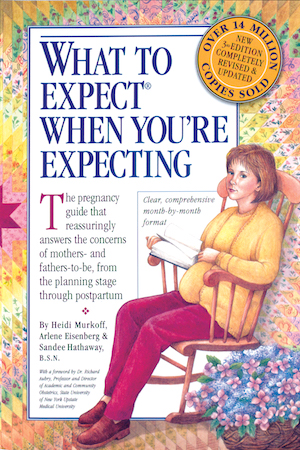
We still advocate all pregnant moms to have a copy of the latest edition of this classic pregnancy guide. The book’s index is an excellent resource to find information on any pregnancy topic, its month-by-month chapters are well organized and its Q&A form is easy to read. It’s amazing how its authors have managed to capture all of the main questions that pregnant moms may be pondering. It has an excellent section on Managing a Complicated Pregnancy, highlighting the major conditions and complications, and what you can look out for. The section on Labor and Delivery is also noteworthy.
The Big Book of Birth
Book by Erica Lyon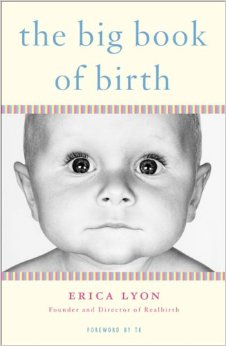
For first time mothers, this is an excellent resource that gives expectant moms the knowledge they need to have about the birth process to give them the confidence and strength to manage labor. Written by renowned childbirth educator Erica Lyon, who founded her own organization, the Realbirth Center, this guide starts from the end of the third trimester and demystifies all aspects of labor, from its early stages to pushing. There are also informative sections on inductions, C-sections, common fears and concerns and postpartum issues. Lyon writes with an engaging voice and style.
Getting Ready for Baby
Book by Hélène Tragos Stelian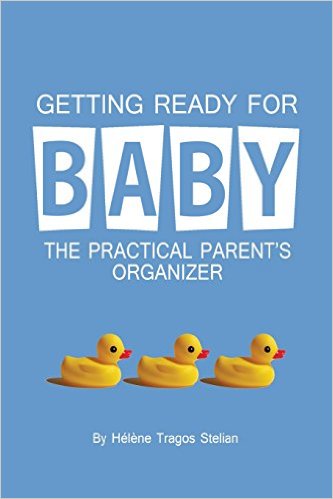
The book is a terrific guide for new parents, helping them organize and prepare for the arrival of their newborn. When the author was expecting twins, she found herself overwhelmed by the countless tasks and purchases she needed to keep track of. She used her research and planning skills to bring some sanity to the preparation process and vowed to share her findings with other parents-to-be.
Building on the success of Stelian’s original edition, this new edition offers updated charts and checklists as well as healthcare and safety guidelines. Her revamped step-by-step instructions and detailed questionnaires enable every parent to find the best obstetrician, pediatrician, and childcare provider available in their area. Newly updated resources showcase the latest in maternity and baby gear, books and magazines on parenting and baby care, and the hottest recommendations on parenting organizations, apps, and blogs.
The organizing tools of Getting Ready for Baby will allow expectant parents to manage to do’s, check off essential baby gear purchases, keep track of doctor’s visits and calls, log borrowed items, manage baby feedings, and much, much more. This amazing guide has an abundance of “practical parent tips” that clarify and define this exciting new phase of family life, making this volume a definite pregnancy must!
Ina May’s Guide to Childbirth
Book by Ina May Gaskin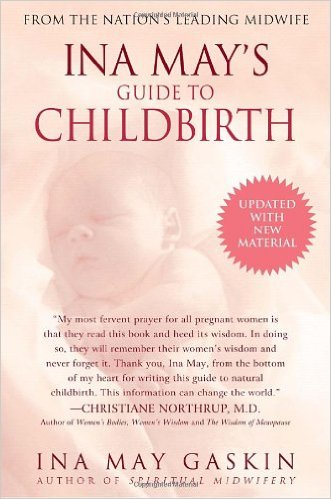
Every pregnant woman should read this gem of a book. Of course midwife Ina May Gaskin advocates for no drugs in her timeless classic on natural childbirth, but even if you chose to get an epidural or are scheduled for a C-section, Gaskin’s beautifully written guide shows the power of a women’s body, a different take on the “pain” of labor pain, and the wondrous birthing process. The birth stories that make up the first third of the book are poignant and inspiring. Gaskin also spends time discussing the powerful mind/body connection during labor and birth. She also has a great chapter on pregnancy and prenatal care, including the importance of nutrition in pregnancy, and the rare complications that can happen after birth.
The Best Birth
Book by Sarah McMoyler and Armin Brott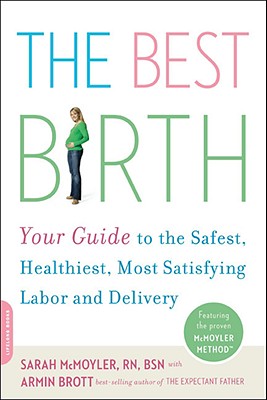
The Best Birth is a refreshing take on the entire birth process, written in a positive, encouraging voice. Instead of advocating wholly for low intervention, or no intervention, the way many birthing books do, its author, Sarah McMoyler, who was a labor and delivery nurse for over twenty years, advocates the options that will make mom feel best. Though her McMoyler Method personally supports low to no intervention births, she also believes that every woman’s body is different and all options should be considered, including epidurals. She covers labor positions, the importance of the birthing partner, and introduces all members of the medical team.
The Thinking Woman’s Guide to a Better Birth
Book by Henci Goer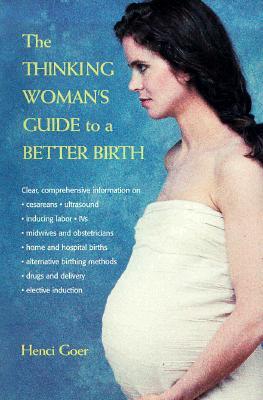
This birthing guide focuses on the various procedures and interventions during labor and delivery based on the latest scientific research. The author, Henci Goer, a birth activist, Lamaze educator, and doula for over 20 years, even includes various studies at the end of her book. Goer helps the expecting mom compare and contrast all of the various birthing options such as C-sections, inductions, pain medications, episiotomies, birthing centers and natural childbirth. Her chapters on slow labor, inductions (there is a great section on tests of fetal well-being), and professional labor support are excellent. Just be mindful, she has a bias towards a low intervention birth. Still, her book informs moms of all the ins and outs of birth.
Pregnancy Dos & Don’ts
Book by Elisabeth Aron, M.D.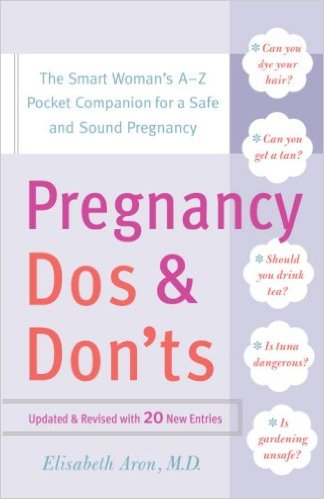
This A to Z guide, written by an award-winning, board-certified obstetrician, includes hundreds of pregnancy concerns, such as whether to drink beverages like coffee and eggnog, the safety of over the counter medications, and everyday habits like applying nail polish and being exposed to paint fumes. Dr. Elisabeth Aron has an easy to follow system including whether the item is dangerous, must be used with caution, safe, or conditional, which means it depends on the trimester. We found Dr. Aron’s guide to address almost every topic or concern a pregnant mom would consider in an easy to navigate format.
Silent Risk
Book by Jason H. Collins, M.D., M.S.C.R.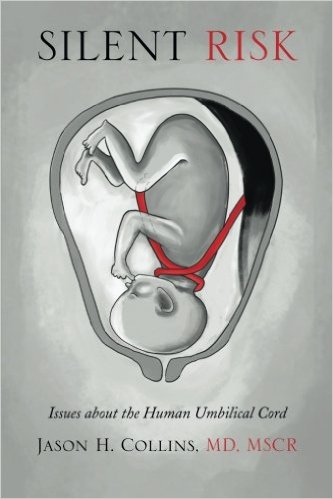
Dr. Jason Collins realized the need for a study of Umbilical Cord Accidents (UCA) when recent studies by the National Institutes of Health (NIH) recognized that 10-15% of stillbirths were a direct result of UCA’s. He knew his pioneering study would be a call to action for more research on this subject. In his new book “Silent Risk,” Collins warns readers of the possible dangers of the umbilical cord, and explores the ways for health care teams to detect and prevent these potential problems that threaten a healthy delivery day for countless newborns globally.
Dr. Collins’s plan to defeat UCA-caused stillbirths is threefold. First, the fetal screening for UCA must be increased. For example, the 18-20 week ultrasound review should include the umbilical cord, its characteristics, and a description of its placental and fetal attachment. Second, managing the umbilical cord must begin prenatally. The ability of ultrasound and magnetic resonance imaging (MRI) to locate and visualize the UCA is well documented. And third, the urgent delivery of the baby in distress as defined by the American College of Obstetricians and Gynecologists as a heart rate of 90 beats per minute for 1 minute on a recorded non-stress test must be introduced.
As stillbirth numbers continue to skyrocket, Dr. Collins informs us that recent research into pregnancy and circadian rhythms may help explain why UCA-causing stillbirth is likely to occur between 2:00 a.m. and 4:00 a.m. Although many stillbirths are attributed to a cord accident, meaning that the event was out of the control of the mother or doctor, hence an “accident” this diagnosis should be made with caution. Cord abnormalities, including a Nuchal Cord, are found in approximately 30% of normal births and may be an incidental event. However, Collins’s research arms the reader with detailed medical information on this perilous condition and the fact that the presence of a cord issue is a “Silent Risk” that cannot be ignored by any health care team.
Dr. Collins is from New Orleans, Louisiana, and trained at Tulane Medical Center. Retired after nearly thirty years of private practice specializing in obstetrics and gynecology, Collins is now a researcher having completed a master’s degree in clinical research from Tulane Medical Center. He is the principal investigator for the Perinatal Umbilical Cord Project (PUCP) a study that reviewed over one thousand no-risk pregnancies for UCA, is peer reviewed, and published by the Royal College of Obstetrics and Gynecology.
Newborn And Infant Care
The Happiest Baby on the Block
Book by Harvey Karp, M.D.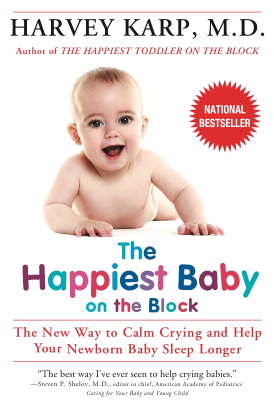
To cross over from an empowered expectant mother, to the empowered proud mother of a newborn, we recommend reading The Happiest Baby on the Block. Dr. Harvey Karp, a renowned pediatrician and child development expert debunks most of the reasons why parents believe their newborns cry or can’t settle down. Dr. Karp also rejects the traditional theories behind colic. His revolutionary 5 S’s are easy methods to turn on what he calls a newborn’s “calming reflex.” This includes Swaddling, Side or Stomach positioning, the Shhhh sound, Swinging and Sucking. His chapter on newborns and sleep is invaluable. The Happiest Baby on the Block is not only an enlightening read, but one that will make those newborn days far more manageable.
Healthy Sleep Habits, Happy Child
Book by Marc Weissbluth, M.D.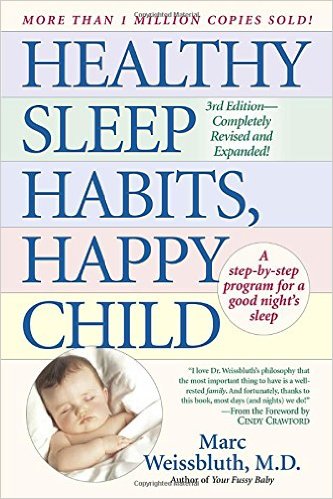
This sleep guide for newborns and children is a must read for new parents. Leading pediatric sleep expert Dr. Marc Weissbluth gives step-by-step, easy to follow instructions on how to get your infant to sleep through the night without interruption, and the best schedule for napping. He also provides a wonderful introduction on healthy sleep with effective sleep strategies such as drowsy signs and bedtime routines. While the first part of his book focuses on how children sleep, the second part is devoted to how parents can help their children establish healthy sleep habits, and the last focuses on sleep disturbances such as nightmares and head banging. We can’t recommend this book enough. One of our PAK moms used Dr. Weissbluth’s methods and both of her sons were sleeping from six in the evening until six in the morning—straight—by the time they turned three-months-old.
Solve Your Child’s Sleep Problems
Book by Richard Ferber, M.D.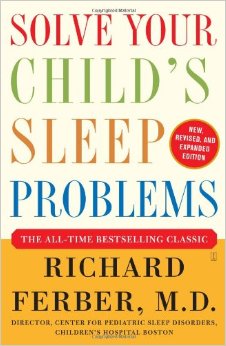
Most parents have heard of Dr. Ferber, and sometimes cringe when they think about the “Ferber” method of sleep training your baby. There is a great misconception that Dr. Ferber’s method entails leaving your child in the crib and walking away for the night. Far from it, Dr. Ferber doesn’t champion this type of sleep training and has a variety of strategies on how to solve your infant or child’s sleep problems. There is no book that we have come across that is as comprehensive as Dr. Ferber’s when it comes to children’s sleep disorders. He also provides informative chapters on how infants and children sleep, sleep associations and limit setting. We wholly recommend to our pregnant moms that they read both books we feature on infant sleep before their babies arrive. This way, they will be prepared for those sleepless nights with a strategy in place.
Baby Facts
Book by Andrew Adesman, M.D.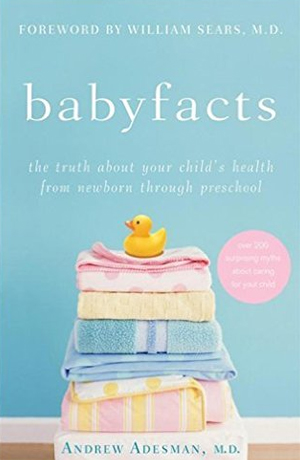
Baby Facts includes over two hundred myths and facts about children’s health from newborn though preschool. Many of these myths have evolved from misinformation that has been passed on throughout the years. Dr. Adesman, a parent himself, has combed through the latest scientific and pediatric literature, recommendations from leading physicians and medical organizations, as well as his own personal experience, to separate fact from fiction. Some common myths he exposes are: If you develop an illness during breastfeeding you have to stop, no sunscreen for babies under six months, sugar causes hyperactivity in children (surprisingly, it doesn’t), a fall isn’t serious unless your child blacks out, you shouldn’t put your child to bed with the lights on, and our favorite, the Mozart myth. Does playing the composer’s music make your baby smarter? It won’t. Dr. Adesman’s book is a fun read, and one that is practical and imperative as well.
What to Expect The First Year
Book by Heidi Murkoff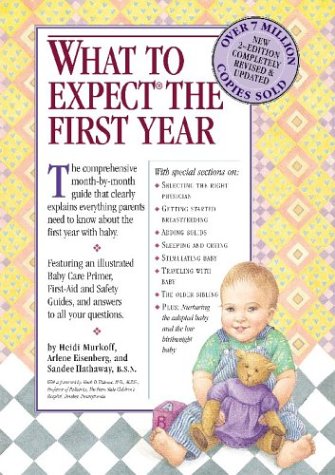
If a baby could come with an instruction manual, this would be it! This reference guide covers all the questions first time moms may have that incipient year of their baby’s life. Each chapter covers one month and includes milestones, issues most babies have that month, what to feed them, how they should be sleeping, and what to expect at each monthly doctor’s visit. There is a noteworthy chapter on illness and first aid. The book is also quite comprehensive about issues moms may face like the struggles of breastfeeding and post partum depression, and gives the latest medical advice on vaccines and safety issues like SIDS.
The Baby Book
Book by William Sears, M.D. and Martha Sears, R.N.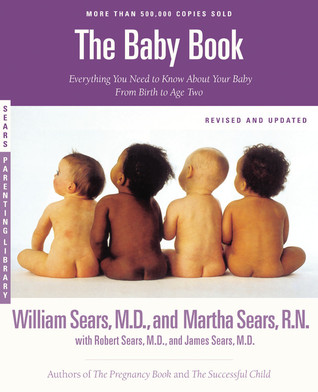
Written by one of the foremost pediatricians of our time, Dr. William Sears, and his wife Martha Sears, a registered nurse, The Baby Book is an encyclopedic guide that covers the first two years of your baby’s life. Not only are all issues relating to your newborn covered, but also other helpful information such as cord blood stem banking and tips for a satisfying labor, attachment parenting, working and parenting, baby proofing and toilet training. Two chapters are solely devoted to breastfeeding and an entire one set aside for how to get your baby to sleep. There is also an excellent chapter on postpartum family adjustments. The Baby Book is an indispensable reference guide for all new parents.
The Nursing Mother’s Companion
Book by Kathleen Huggins, R.N., M.S.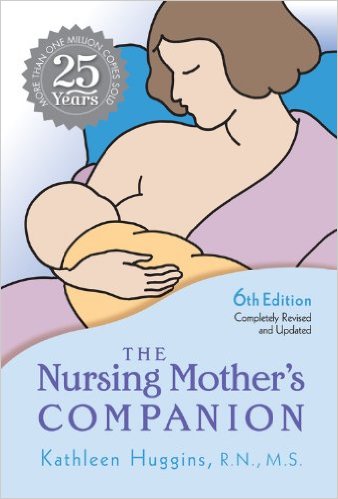
This quintessential guide for breastfeeding is a terrific resource for all expectant mothers who are planning on nursing. The author’s introduction addresses the popular topic of whether breastfeeding is better than bottle-feeding for both mom and baby. The first part of the book covers the first week, including the biology of what is happening to mom’s breasts, the importance of diet, how you know if your baby may not be getting enough, sucking problems and engorgement. It then moves on to the first two months, and nursing through toddlerhood. There is an excellent section on expressing and pumping milk complete with diagrams of the latest pumps. Author Kathleen Huggins writes in a comforting, soothing and supporting tone that is just what mom may need during that first week or two when breastfeeding may seem like an uphill battle.
Pregnancy Support
Taking Charge of Your Fertility
Book by Toni Weschler, MPH.
This bestseller, which has been in print for over ten years, has helped hundreds of women achieve pregnancy and gain better control of their gynecological health. It demystifies a woman’s understanding of her reproductive system and provides unparalleled insights into the workings of her fertility and body. The author’s “Fertility Awareness Method,” can help maximize a woman’s chances of conception. Taking Charge of Your Fertility also answers many common questions about conception, devotes a chapter each to PMS and menopause, and even has updates on the latest fertility treatments.
Pregnancy after a Loss and Trying Again
Book by Pregnancy after a Loss by Carol Cirulli Lanham and Trying Again by Ann Douglas and John R. Sussman, M.D
Both books are a must read for moms who have suffered a loss, such as a miscarriage, stillbirth or infant death. Each author has experienced a loss herself and has done exhaustive research to provide moms the information they need to know to decide whether or not to try again for another pregnancy. Both books also clearly and effectively lay out the options moms will have with their subsequent high-risk pregnancies, such as what type of protocols to follow, doctors to consult, diet, as well as the psychological aspects of the process, whether or not your are emotionally ready. While Pregnancy after a Loss is more supportive in content, style and voice, written in a first person narrative style, Trying Again is co-authored by an obstetrician and more clinical in nature. Both are phenomenal resources for women who are thinking about or ready to try again.
Children’s Corner
An Angel in my Pocket
Book by Jennifer Schneider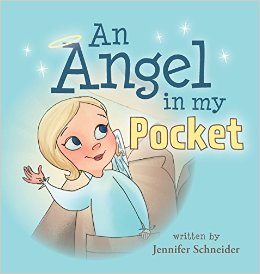
Jennifer Schneider was inspired by the loss of one of PAK’s board members. In the story of this endearing and enchanting picture book, we step into a day in the life of a small child and meet his special friend, his angel! An Angel in My Pocket is about a child who has a guardian angel. His angel is with him no matter what. Whether he’s playing sports, at school, or going to bed his angel is there to help him through his mistakes and risky situations. These lovable characters show us how our imagination and belief can get us through the big and small events that occur on a day-to-day basis. A portion of the proceeds from An Angel in my Pocket is graciously being donated to PAK.